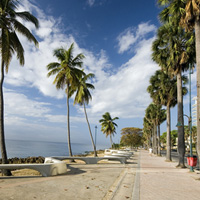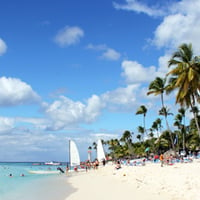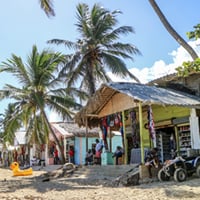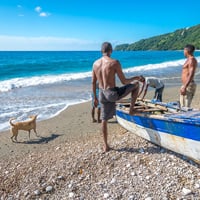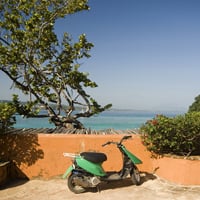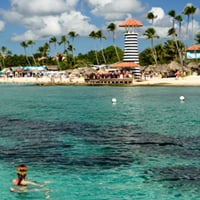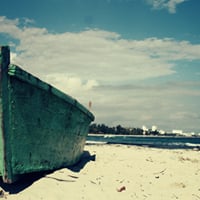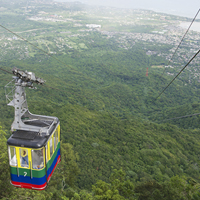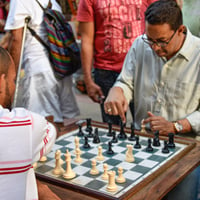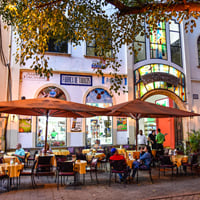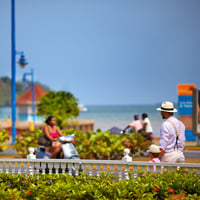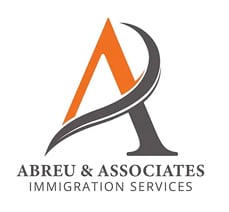The Dominican Republic
Coastal BeachesThe Dominican Republic is a nation on the island of Hispaniola, part of the Greater Antilles archipelago in the Caribbean region. It occupies the eastern five-eighths of the island, which it shares with Haiti. Being the second-largest country in the Antilles by area, the Dominican Republic is the third-most populous in the region, with approximately 10 million inhabitants, of whom around three million live in the metropolitan area of Santo Domingo, the capital city. The country boasts a rich history, having been the site of the first European settlement in the Americas, founded by Christopher Columbus in 1492. Its colonial legacy is evident in its culture and architecture, particularly in the Zona Colonial district of Santo Domingo, which is a UNESCO World Heritage Site. The Dominican Republic is known for its beautiful beaches, resorts, and golfing opportunities. It has a diverse geography that includes rainforests, savannahs, and highlands, including Pico Duarte, the tallest mountain in the Caribbean. The climate is predominantly tropical, with warm temperatures year-round, although it varies from subtropical in the highlands to desert in the far west. The country is also home to multiple ecosystems, many of which are protected in national parks. Tourism is a significant part of the economy, with destinations like Punta Cana and Puerto Plata being popular for their beaches and balnearios. The culture of the Dominican Republic is a mixture of Taino, African, and Spanish influences. Music and sport are of great importance in the Dominican social and cultural life, with Merengue and Bachata as the national dance and music, and baseball as the favorite sport. The Dominican Republic has a developing economy with services, manufacturing, and agriculture as the primary sectors. It is known for the production of sugar, coffee, and tobacco. In recent years, the service sector has overtaken agriculture as the economy's largest employer due to growth in telecommunications, tourism, and free trade zones. The standard of living in the Dominican Republic has been improving, but the country still faces many challenges, including poverty, corruption, and inadequate public services. The Dominican Republic is a democratic nation with a multi-party political system and a popularly elected president. However, political stability has been a challenge throughout its history. The country has made strides in improving its infrastructure and education system, but it still has a long way to go in terms of social and economic development.
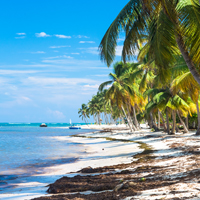 InsideDR Concierge
InsideDR ConciergeGet Quote
Because we've done it and we understand what it’s like to move to the Dominican Republic, our goal is to ensure that you and your family feel secure and supported throughout this new adventure. We’re here to welcome and guide you every step of the way.
 InsideDR Concierge
InsideDR ConciergeBecause we've done it and we understand what it’s like to move to the Dominican Republic, our goal is to ensure that you and your family feel secure and supported throughout this new adventure. We’re here to welcome and guide you every step of the way.
Get Quote
Living in Dominican Rep
Best Places to Live in Dominican Rep
Visa & Residency
The process of obtaining a residency in the Dominican Republic can vary depending on the type of visa an expat is applying for. Generally, the process is considered to be of average difficulty compared to other countries. The most common types of residency visas are the Rentista Visa, Pensionado Visa, and Investor Visa. The Rentista Visa is designed for individuals who have a stable and permanent income from investments, financial activities, or other sources outside of the Dominican Republic. To qualify, applicants must prove that they have a monthly income of at least $2,000 USD for a period of five years. This visa is particularly popular among digital nomads and remote workers who can demonstrate the required income. The Pensionado Visa is for retirees who receive a pension from a foreign government, international agency, or private company. Applicants must show proof of a monthly pension of at least $1,500 USD. This visa is attractive for retirees due to the Dominican Republic's favorable climate and relatively low cost of living. The Investor Visa is for those who invest a significant amount of money in the Dominican Republic, such as in real estate, a business, or government bonds. The investment threshold is typically around $200,000 USD. To apply for any of these visas, expats must first gather the required documents, which usually include a passport, birth certificate, marriage certificate (if applicable), police record, health certificate, and proof of income or investment. All documents must be legally translated into Spanish and apostilled or legalized by the Dominican consulate. Once the documents are prepared, the applicant must submit them to the Dominican Migration Department either in person or through a legal representative. After submission, the application will be reviewed, which can take several months. If approved, the applicant will receive a temporary residency permit, which is typically valid for one year and can be renewed. After five years of temporary residency, expats can apply for permanent residency. The process can be bureaucratic and may require the assistance of a local attorney to navigate the complexities of the Dominican system. However, with proper preparation and guidance, obtaining a residency visa in the Dominican Republic is a manageable process for many expats.
Healthcare in Dominican Rep
The healthcare system in the Dominican Republic consists of a mix of public and private facilities. The public healthcare system is accessible to all citizens and legal residents, including those who are unemployed or have low income, through the government's social security system. However, public hospitals and clinics often face challenges such as overcrowding, limited resources, and understaffing. In contrast, private healthcare facilities in the Dominican Republic are known for providing higher quality services with more modern equipment and shorter wait times, but at a higher cost. Many expatriates and digital nomads opt for private healthcare and also invest in private health insurance to ensure access to the best services. Expats can access public healthcare once they have legal residency and are contributing to the social security system, but many prefer private care for more serious health issues.
Cost of Living
The cost of living in the Dominican Republic is considered moderate when compared to other countries in the region. Essentials such as local food and public transportation are relatively affordable, but imported goods and services aimed at tourists can be more expensive.
Weather
The Dominican Republic enjoys a tropical climate with high temperatures and abundant sunshine year-round. The coastal areas are generally warmer, while the central highlands can be cooler and more temperate. There is a rainy season that varies by region, typically occurring from May to November, with potential for tropical storms and hurricanes.
Educational System in Dominican Rep
The educational system in the Dominican Republic is structured similarly to many Latin American countries, with a mix of public and private institutions. Education is compulsory from ages 6 to 14, which corresponds to the primary and secondary levels. The school year typically runs from August to June. The educational journey begins with pre-primary education (nivel inicial) for children aged 3 to 5. Primary education (educación primaria) then takes place from ages 6 to 12 and is divided into two cycles of three years each. Following primary education, students enter secondary education (educación secundaria), which is also divided into two cycles: the basic cycle (ciclo básico) for students aged 12 to 14, and the diversified cycle (ciclo diversificado) for students aged 15 to 17. The diversified cycle offers different modalities such as general, technical-vocational, and arts education, preparing students for higher education or employment. Upon completion of secondary education, students receive a Bachillerato diploma, which is required for university admission. The quality of education in the Dominican Republic varies, with private schools generally offering higher quality education than public schools. However, the government has been working on improving the educational system through various reforms and investments.
Copyright 1997-2025 Burlingame Interactive, Inc.

